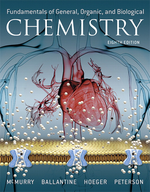?The reaction \(3 \mathrm{O}_{2}(g) \rightleftarrows 2 \mathrm{O}_{3}(g)\) has \(\Delta
Chapter 7, Problem 7.64(choose chapter or problem)
The reaction \(3 \mathrm{O}_{2}(g) \rightleftarrows 2 \mathrm{O}_{3}(g)\) has \(\Delta H= +285 \mathrm{~kJ} / \mathrm{mol}\). Does the equilibrium constant for the reaction increase or decrease when the temperature increases?
Text Transcription:
3 O_2~g rightleftarrows 2 O_3~g
Delta H=+285 kJ/mol
Unfortunately, we don't have that question answered yet. But you can get it answered in just 5 hours by Logging in or Becoming a subscriber.
Becoming a subscriber
Or look for another answer
